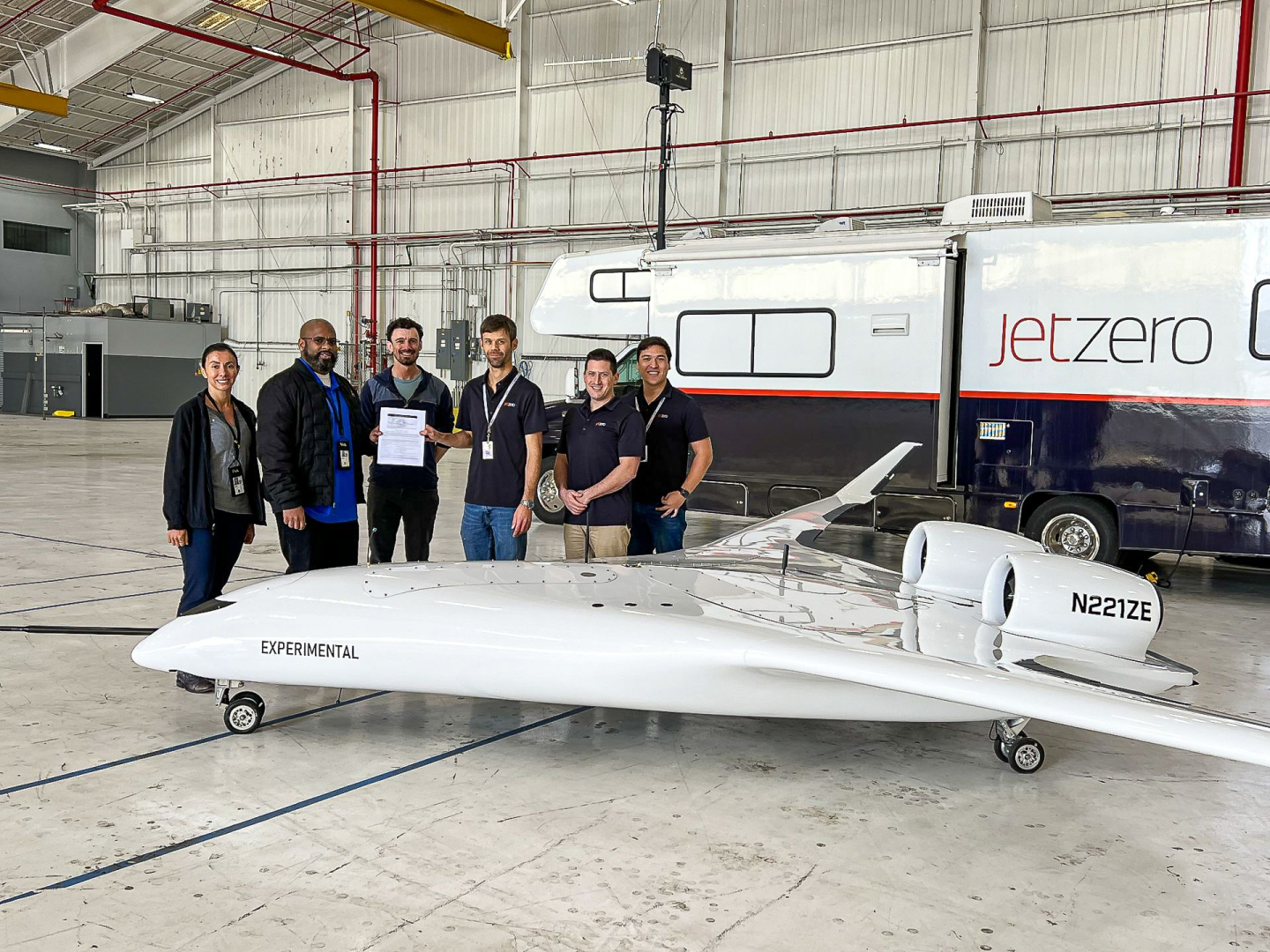FAA clears JetZero’s futuristic blended wing design plane for flight
JetZero has been actively working with key industry players, including the US Air Force, NASA, and the FAA, to turn its blended wing concept into a reality by 2030.

The familiar, elongated tube design of passenger jets may finally be an old thing soon. JetZero, an aerospace company known for its innovative aircraft designs, has made a significant leap forward – its blended wing demonstrator aircraft has officially been granted an Airworthiness Certificate by the Federal Aviation Administration (FAA). This means its Pathfinder aircraft is cleared for test flights which would bring aviation one step closer to a future of radically transformed air travel.
The FAA certification of the scaled-down Pathfinder demonstrator aircraft is a significant milestone. This model features a 23-ft (7-m) wingspan, which is 12.5% the size of the full aircraft. JetZero’s enthusiastic LinkedIn announcement, “Now let’s go fly!” implies that we may soon see video footage of the Pathfinder taking its inaugural flight.
The blended wing concept
The blended wing design is a fascinating departure from the standard jetliner format. As the name suggests, this design seamlessly merges the aircraft’s fuselage and wings into one continuous aerodynamic shape. This unique approach results in a plane resembling a flying wing, offering numerous advantages.

The most notable benefit is significantly improved fuel efficiency. Without separating wings and fuselage, nearly the entire aircraft surface generates lift. JetZero boldly claims that its blended wing design could consume 50% less fuel than traditional jets.
Potential impact on the aviation industry
The dramatic improvement in fuel efficiency has far-reaching implications. For airlines, the immediate advantage is a substantial reduction in operational costs. Additionally, this opens the door to longer-range transcontinental flights that were previously less feasible.
Perhaps most importantly, the blended wing design aligns with the aviation industry’s growing environmental consciousness. Integrating this concept with sustainable power sources like battery-electric, hydrogen, or ammonia-fuelled systems could unlock a future of low-emission air travel. And while cleaner flights are a major win, the blended wing design also offers some benefits for passengers. The spacious layout provides more room for both passengers and cargo, potentially alleviating the cramped feeling of many long-haul flights.
JetZero’s progress
JetZero has been actively working with key industry players, including the US Air Force, NASA, and the FAA, to turn its blended wing concept into a reality by 2030. Their progress was further accelerated in August 2023 when they secured a contract with the Air Force to develop a full-size prototype by 2027.
The blended-wing era is within reach with recent advancements by Airbus, Zeroavia, and others. Who knows, we may be just a decade away from experiencing this futuristic aircraft design’s increased spaciousness and efficiency.
 SHOW COMMENT ()
SHOW COMMENT ()









